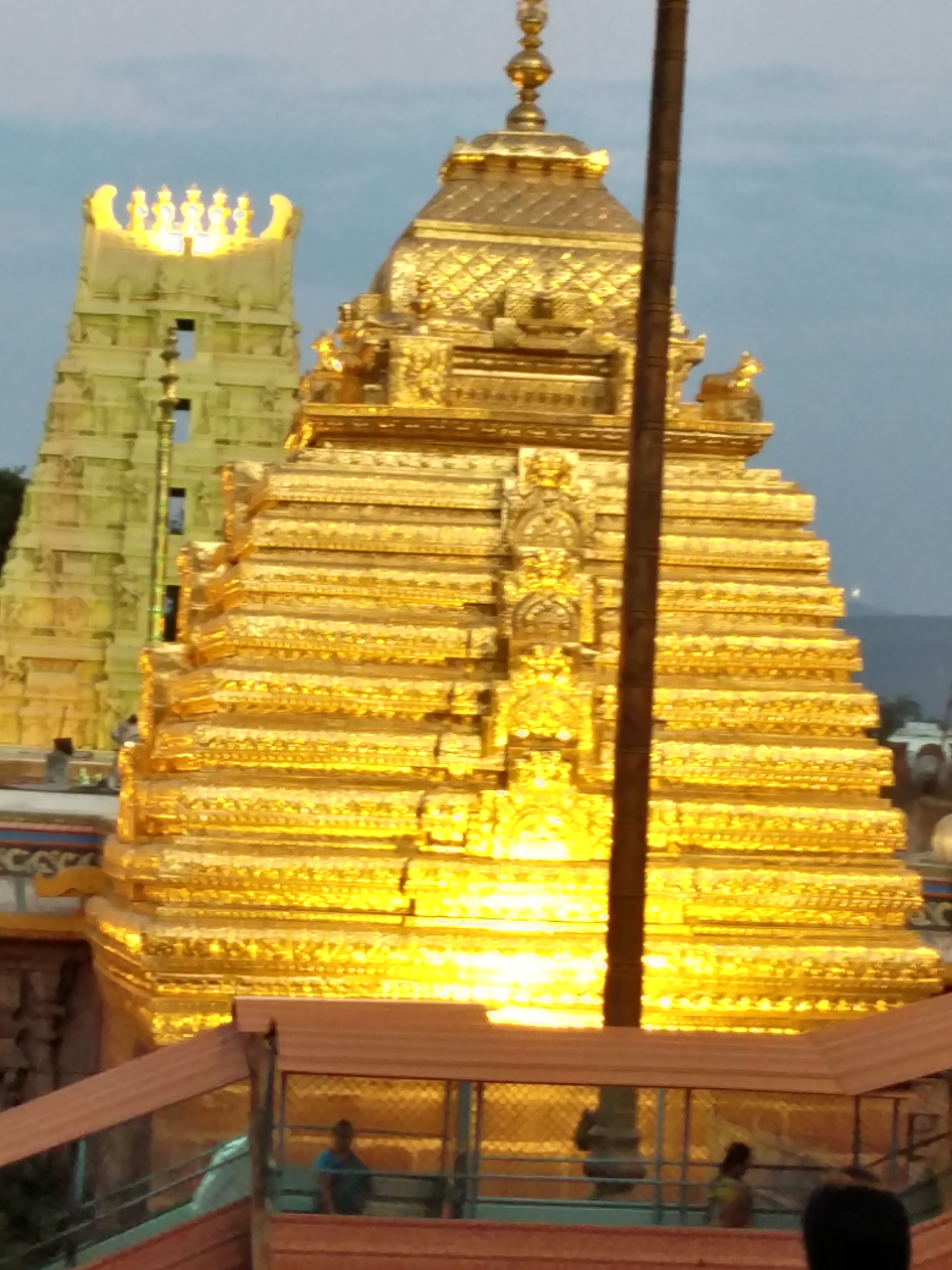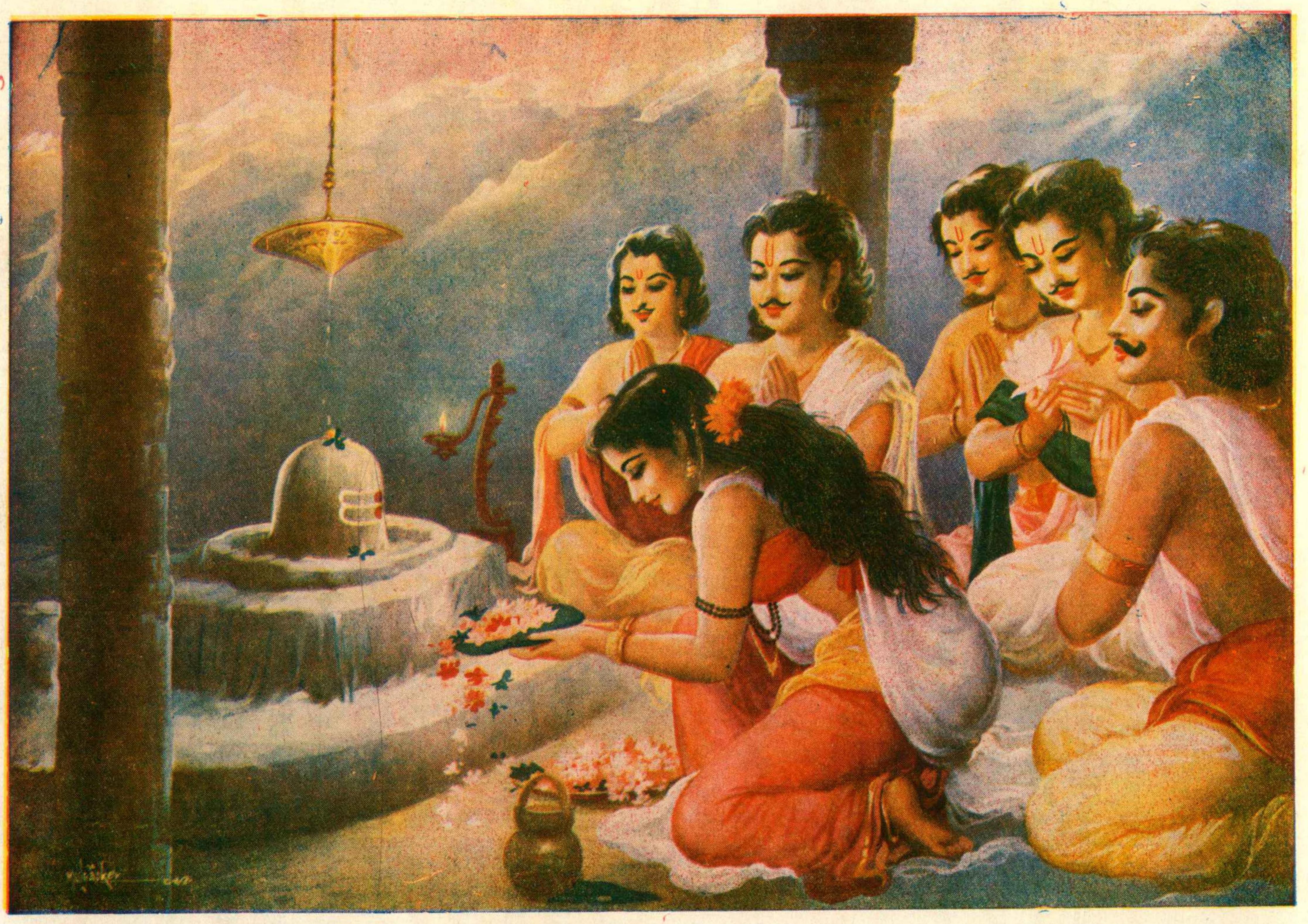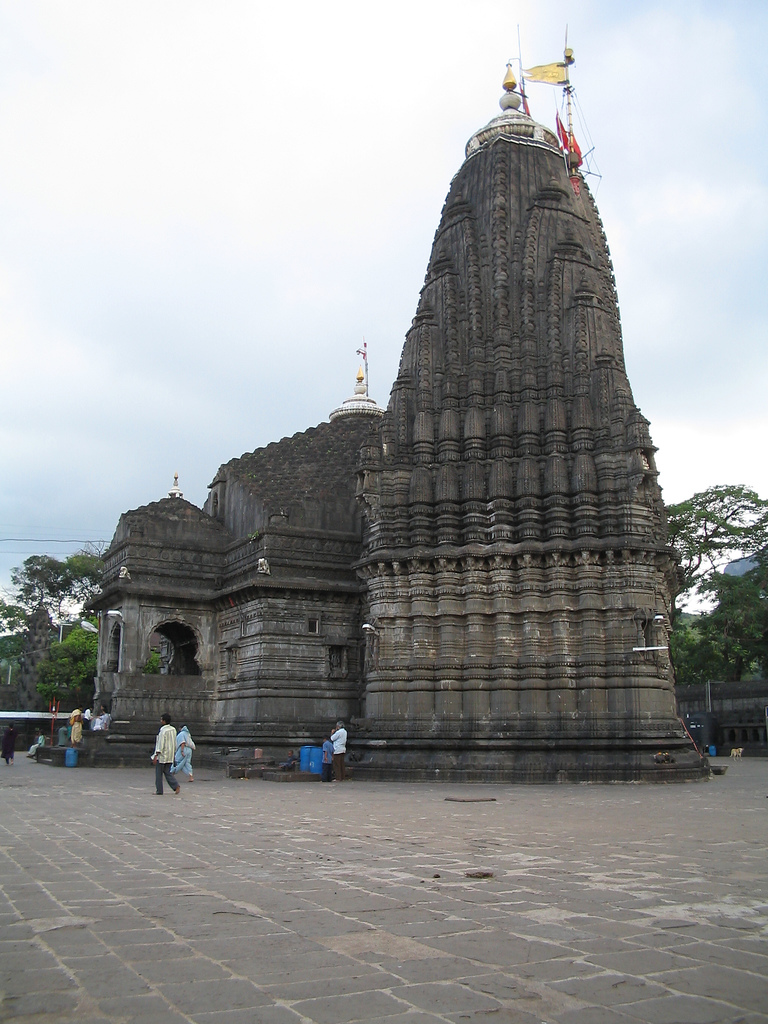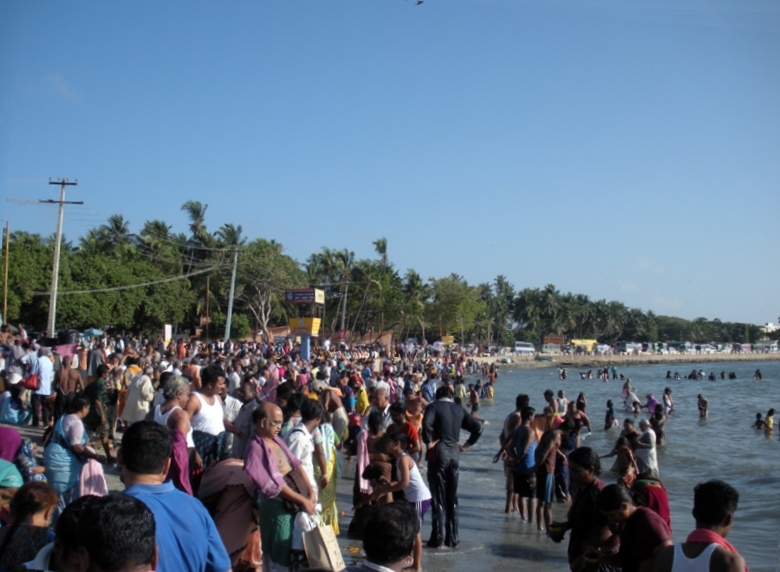|
Jyotirlingas
A Jyotirlinga () or Jyotirlingam is a devotional representation of the Hindu god Shiva. The word is a Sanskrit compound of ('radiance') and ('sign'). The Śiva Mahāpurāṇam (also ''Shiva Purana'') mentions 64 original ''jyotirlinga'' shrines in India. Hinduism Legend According to a Shiva legend from the Shiva Purana, once, Brahma (the god of creation) and Vishnu (the god of preservation) had an argument over their supremacy. To settle the debate, Shiva pierced the three worlds, appearing as a huge, infinite pillar of light, the ''jyotirlinga.'' Brahma and Vishnu decided to ascend and descend across a pillar of light respectively, to find the end of the light in either direction. According to some iterations, Vishnu assumed his Varaha avatar to achieve this task, while Brahma rode a hamsa (swan). Brahma lied that he had discovered the end of the light, producing a ketakī flower as proof, while Vishnu admitted that he could not find the end of the light from his j ... [...More Info...] [...Related Items...] OR: [Wikipedia] [Google] [Baidu] |
Kedarnath Temple
Kēdāranātha Temple (Sanskrit: केदारनाथ मंदिर, IAST: ''Kēdāranātha Mandira'', ) is a Hindu temple, one of the twelve ''jyotirlinga'' of Śiva. The temple is located on the Garhwal Himalayan range near the Mandakini River, Mandākinī river, in the state of Uttarakhand, India. Due to extreme weather conditions, the temple is open to the general public only between the months of April (Akshaya Tritiya, Akṣaya Tritiya) and November (Kartika Purnima, Kārtika Pūrṇimā, the autumn full moon). During the winters, the ''vigraha'' (deity) of the temple is carried down to Ukhimath to be Worship, worshiped for the next six months. Kēdāranātha is seen as a homogeneous form of Śiva, the 'Lord of Kēdārakhaṇḍa', the historical name of the region. The temple is not directly accessible by road and has to be reached by a uphill trek from Gauri Kund, Gaurikuṇḍa. According to Hindu legends, the temple was initially built by the Pāṇḍavas, a ... [...More Info...] [...Related Items...] OR: [Wikipedia] [Google] [Baidu] |
Mahakaleshwar Jyotirlinga
Mahakaleshwar Jyotirlinga () is a Hindu temple dedicated to Shiva and is one of the twelve Jyotirlingas, shrines which are said to be the most sacred abodes of Shiva. It is located in the ancient city of Ujjain in the state of Madhya Pradesh, India. The temple is situated on the side of the holy river ''Shipra River, Shipra''. The presiding deity, Shiva in the lingam form is believed to be ''Swayambhu'', deriving currents of power (Shakti) from within itself as against the other images and lingams that are ritually established and invested with mantra-shakti. Madhya Pradesh has two Jyotirlingas, the second one, Omkareshwar Temple, Omkareshwar Jyotirlinga, is situated about 140 km south of Mahakaleshwar Jyotirlinga. Temple shrines The idol of Mahakaleshwar is known to be ''dakshinamurthi'', which means that it is facing the south. This is a unique feature, upheld by the ''tantric shivnetra'' tradition to be found only in Mahakaleshwar among the 12 Jyotirlingas. The idol ... [...More Info...] [...Related Items...] OR: [Wikipedia] [Google] [Baidu] |
Trimbakeshwar Shiva Temple
Trimbakeshwar Shiva Temple (श्री त्र्यंबकेश्वर ज्योतिर्लिंग मंदिर) is an ancient Hindu temple in the town of Trimbak, in the Trimbakeshwar tehsil in the Nashik District of Maharashtra, India, 28 km from the city of Nashik and 40 km from Nashik road. It is dedicated to the Hindu god Shiva and is one of the twelve ''jyotirlingas'' where the Hindu genealogy registers at Trimbakeshwar, Maharashtra are kept. The origin of the sacred Godavari River is near Trimbak. Several Hindu rituals are carried out in Trimbakeshwar, for that pilgrims travel from all over India. The Kusavarta ''kunda'' (sacred pond) in the temple premises, built by Shrimant Sardar Raosaheb Parnerkar, who was the Fadnavis of Indore State, is the source of the Godavari River, the second longest river in India. A bust of Sardar Fadnavis and his wife can be seen on the edge of the kunda. The current temple was built by Peshwa Balaji Ba ... [...More Info...] [...Related Items...] OR: [Wikipedia] [Google] [Baidu] |
Ramanathaswamy Temple
Ramanathaswamy Temple (''Rāmanātasvāmi Kōyil'') is a Hindu temple dedicated to the Hindu god Shiva located on Rameswaram island in the state of Tamil Nadu, India. It is one of the twelve Jyotirlinga temples. It is one of the 275 Paadal Petra Sthalams, the sacred sites glorified by the Nayanars (Shaivite poet-saints), Appar, Sundarar, and Sambandar, with their songs. According to tradition, the ''lingam'' (an aniconic form of Shiva) of the Ramanathaswamy Temple was established and worshipped by Rama before he crossed the bridge called Rama Setu to the island kingdom of Lanka, identified with Sri Lanka. It is one of the Char Dham pilgrimage sites. The temple was expanded during the 12th century by the Pandya Dynasty, and its principal shrine’s sanctum was renovated by Jeyaveera Cinkaiariyan and his successor Gunaveera Cinkaiariyan, monarchs of the Jaffna kingdom. The temple has the longest corridor among all the Hindu temples of India. It was built by King Muthuramalin ... [...More Info...] [...Related Items...] OR: [Wikipedia] [Google] [Baidu] |
Aundha Nagnath Temple
Aundha Nagnath Temple (Marathi: औंढा नागनाथ मंदिर) is an ancient Shiva temple, claimed to be a Jyotirlinga in contrast to Nageshwar Temple in Dwarka. Located at Aundha Nagnath in Hingoli district of Maharashtra, India. History Aundha Nagnath (Nageshwaram) is a Temple in Hingoli District in the state of Maharashtra, India, an important place of pilgrimage. The present temple is said to have been built by the Seuna (Yadava) dynasty and dates to 13th century. The first temple is said to be from time of the ''Mahabharata'' and is believed to have been constructed by Yudhishthira, eldest of the Pandavas, when they were expelled for 14 years from Hastinapur. It has been stated that the temple building was seven-storeyed before it was sacked by Aurangzeb. Structure The temple covers an area of 669.60 sq mt (7200 sq ft) and height of 18.29 m (60 ft)Maharashtra State Gazetteers: Parbhani, 1994 - Page 546 The total area in which temple campus is ... [...More Info...] [...Related Items...] OR: [Wikipedia] [Google] [Baidu] |
Bhimashankar Temple
Bhimashankar Temple is a Hindu temple dedicated to ''Shiva'' situated in its eponymous village, Bhimashankar, in Pune district of Maharashtra. It is a key pilgrimage centre and contains one of the 12 ''Jyotirlingas''. The temple's Shiva lingam is one of the five ''Jyotirlingas'' of Maharashtra. The ''mandir'' is situated on a mountain, 110 kilometers away from Pune. The temple's vicinity has rare plant and animal species. The mandir is located in ''Khed taluka'', in the Bhimashankar forest range. The Bhima River originates from the Bhimashankar village, and the hills of the Manmad village are present near it, there are old rock carvings of the God Bhimashankar, ''Bhootings'' and ''Amba-Ambika'' on these hills. History According to Namdev, a saint in the medieval era, Saint Jnaneshwar went to Tryambakeshwar and then Bhimashankar. Namdev himself has also visited this place. Bhimashankaram shrine and the Bhimarathi river have been talked about in writings as far back as the 13 ... [...More Info...] [...Related Items...] OR: [Wikipedia] [Google] [Baidu] |
Baidyanath Temple
Baidyanath Temple (IAST: Baidyãnath), also known as Baba Baidyanath Dham, is a Hindu temple dedicated to Shiva. It is located in Deoghar, in the Santhal Parganas division of the Indian state of Jharkhand. The temple complex comprises the central shrine of Baba Baidyanath along with 21 additional temples. It is significant to the Hindu sects of Shaivism as this temple is referred to as one of the twelve Jyotirlingas. Legend According to the legends, Ravana was performing penance in the Himalayan region to appease Shiva. He offered nine of his heads as an offering to Shiva. As he was to sacrifice his tenth head, Shiva appeared before him and expressed satisfaction with the offering. Then, Shiva asked what boon he desired. Ravana asked to take the "Kamna Linga'' to the island of Lanka and expressed his desire to take Shiva from Kailash to Lanka. Shiva agreed to Ravana's request but with a condition. He said that if the lingam was placed en route, it would become the permanent ... [...More Info...] [...Related Items...] OR: [Wikipedia] [Google] [Baidu] |
Nageshvara Jyotirlinga
Nageshwar Temple is a Hindu temple dedicated to the Hindu god Shiva located on Dwarka, Gujarat, India. It is one of the legendary temples mentioned in the Shiva Purana and one of the twelve Jyotirlingas. Jyotirlinga According to Shiva Purana, the Shiv Mahapuraan, Brahma (the Creator) and Vishnu (the Preserver) once had a disagreement about which of them were supreme. To test them, Shiva pierced the three worlds as an immeasurable pillar of light, the Jyotirlinga. Vishnu and Brahma parted company to determine the extent of each end of the pillar. Brahma, who had set off upward, lied that he had discovered the upper end of the pillar, but Vishnu, who had gone in the direction of the base of the pillar, admitted that he had not. Shiva then appeared as a second Jyotirlinga and cursed Brahma, telling him that he would have no place in the ceremonies. The Jyotirlinga is the supreme indivisible reality from which Shiva appears. Jyothirlinga shrines commemorate this time when Shiva ap ... [...More Info...] [...Related Items...] OR: [Wikipedia] [Google] [Baidu] |
Kashi Vishwanath Temple
Kashi Vishwanath Temple is a Hindu temple dedicated to Shiva. It is located in Vishwanath Gali, in Varanasi, Uttar Pradesh, India. The temple is a Hindu pilgrimage site and is one of the twelve Jyotirlinga shrines. The presiding deity is known by the names Vishwanath and Vishweshwara (IAST: ''Viśvanātha'' and ''Viśveśvara''), meaning ''Lord of the Universe''. The original temple, called the ''Adi Vishveshwar Temple'', was demolished by Mohammad of Ghor during his invasion of India. Subsequently, the template was rebuilt by Man Singh I and Todar Mal under the emperor Akbar. According to several historical accounts, the Mughal Emperor Aurangzeb ordered the demolition of the Hindu temple in 1669. Subsequently, in 1678, the Gyanvapi Mosque was built on its site, but Hindu pilgrims continued to visit the remnants of the temple. The current structure was constructed on an adjacent site by the Maratha ruler Ahilyabai Holkar of Indore in 1780. In 2021, a major redevelopment ... [...More Info...] [...Related Items...] OR: [Wikipedia] [Google] [Baidu] |
Omkareshwar Temple
Omkareshwar Temple (IAST: ''Ōṃkārēśvar'') is a Hindu temple dedicated to Shiva, located in Mandhata, nearby Khandwa city in Khandwa district of the Indian state of Madhya Pradesh. It is one of the 12 revered Jyotirlinga shrines of Shiva. It is on an island called Mandhata, near Khandwa city in the Narmada River at Khandwa district in Madhya Pradesh, India; the shape of the island is said to be like the Devanagari ॐ symbol. There are two main temples of Shiva here, one to Omkareshwar (whose name means "Lord of ''Omkara'' or the Lord of the ''Om'' sound") located in the island and one to Mamleshwar (Amaleshwar) (whose name means "Immortal Lord" or "lord of the Immortals or Devas") located on the southern bank of the Narmada River on the mainland. Madhya Pradesh has two Jyotirlingas, the second one, Mahakaleshwar Jyotirlinga, is situated about 140 km north of Omkareshwar Jyotirlinga. Jyotirlinga According to the ''Shiva Purana'', once, Brahma and Vishnu had an ... [...More Info...] [...Related Items...] OR: [Wikipedia] [Google] [Baidu] |
Grishneshwar Temple
Grushneshwar Jyotirlinga is a Hindu temple of Shiva in Verul village of Aurangabad district, Maharashtra, India. It is one of the 12 '' Jyotirlinga'' mandirs. The mandir is a national protected site, one and a half kilometers away from the Ellora Caves, north-west of the city Aurangabad, and east-northeast far from Mumbai. Grushneshwar is mentioned in the ''Shiva Purana'', the ''Skanda Purana'', the ''Ramayana'' and the ''Mahabharata.'' Etymology The word ''Ghrneshwara'' means "lord of compassion". History The temple structure was destroyed by the Delhi Sultanate in 13th and 14th centuries. The temple went through several rounds of rebuilding followed by re-destruction during the Mughal-Maratha conflict. Maloji Bhosale (grandfather of Shivaji) first restored it in the 16th century and rebuilt it to its current form in the year 1729, under the sponsorship of queen Gautama Bai Holkar of Indore, after the fall of the Mughal Empire. It is presently an important and active pil ... [...More Info...] [...Related Items...] OR: [Wikipedia] [Google] [Baidu] |
Mallikarjuna Temple, Srisailam
Mallikarjuna Swamy Temple or Srisailam Temple is a Hindu temple dedicated to the deities Shiva and Parvati, located at Srisailam in the Indian state of Andhra Pradesh. It is significant to the Hindu sects of both Shaivism and Shaktism as this temple is referred to as one of the twelve Jyotirlingas of Shiva and as one of the eighteen Shakti pithas, centres of the Hindu goddess. Shiva is worshiped as Mallikarjuna and is represented by the ''lingam''. His consort Parvati is depicted as Bhramaramba. Legend When Shiva and Parvati decided to find suitable brides for their sons. Shiva got Riddhi (intellect) and Siddhi (spiritual power) married to Ganesha. Kartikeya on his return was enraged and went away to stay alone on Mount Krauncha in Palani in the name of ''Kumara brahmachari''. On seeing his father coming over to pacify him, he tried to move to another place, but on the request of the Devas, stayed close by. The place where Shiva and Parvati stayed came to be known as Srisai ... [...More Info...] [...Related Items...] OR: [Wikipedia] [Google] [Baidu] |









